#Lockheed 10-E Electra plane
Text

Have Researchers Found Amelia Earhart’s Long-Lost Plane?
A new sonar image shows an airplane-shaped object resting on the bottom of the Pacific Ocean, not far from where Earhart and her navigator, Fred Noonan, went missing in 1937.
On July 2, 1937, pioneering pilot Amelia Earhart vanished somewhere over the Pacific Ocean near the end of her historic around-the-world flight. For decades, her mysterious disappearance has perplexed explorers, who have spent millions of dollars trying to find her missing Lockheed 10-E Electra plane.
Now, a possible new clue has emerged in the case: A sonar image captured during an expedition last fall shows an airplane-shaped object sitting on the ocean floor, not far from where experts believe Earhart likely crashed, reports the Wall Street Journal’s Nidhi Subbaraman.
The blurred object is far from definitive proof, but Dorothy Cochrane, an aeronautics curator at the Smithsonian’s National Air and Space Museum, tells Smithsonian magazine it’s “an intriguing image” that warrants a second look.
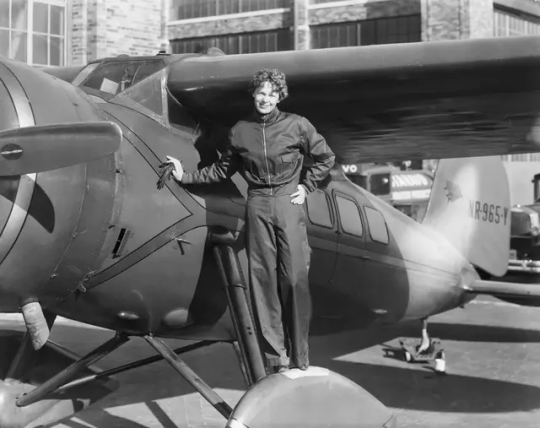

The expedition was led by Tony Romeo, who is a former intelligence officer with the U.S. Air Force, a pilot and a commercial real estate investor from South Carolina. In 2021, he sold his real estate properties and spent $11 million to fund the trip, including buying high-tech equipment to aid in the search.
“This has been a story that’s always intrigued me, and all the things in my life kind of collided at the right moment,” Romeo tells Business Insider’s Katherine Tangalakis-Lippert and Rebecca Rommen. “I was getting out of real estate and looking for a new project, so even though I really started about 18 months ago, this was something I’ve been thinking and researching for a long time.”
Last September, a team from the exploration company Deep Sea Vision, which Romeo founded, departed from Tarawa, Kiribati, in the South Pacific aboard a research vessel. Working in 36-hour shifts, the 16-person crew used an underwater autonomous vehicle equipped with sonar to scour the sea floor, scanning roughly 5,200 total square miles.
About 90 days into the trip, the team was reviewing sonar images and noticed something unusual in the data from some 60 days prior. The mysterious object looked to be about the same shape and size as an aircraft, and it was identified roughly 100 miles from Howland Island, which is within the region where experts think Earhart’s plane went down. The object is around 16,400 feet below the water’s surface.

By then, however, the crew had determined it was too late to return to the site for a closer look. The camera on the underwater vehicle was also broken, which meant they wouldn’t be able to see anything if they did circle back, reports the Post and Courier’s Tony Bartelme.
But Romeo is undeterred and hopes to revisit the area in the future.
“This is maybe the most exciting thing I’ll ever do in my life,” he tells the Wall Street Journal. “I feel like a 10-year-old going on a treasure hunt.”
In the meantime, the sonar image is not detailed enough for experts to draw any definitive conclusions.
“It definitely appears to be an aircraft of some sort,” David Jourdan, who has searched three times for Earhart’s missing plane and is the co-founder and president of the ocean exploration company Nauticos, tells the Post and Courier. “It has aircraft-like features. But sound is funny. It can mislead you. We can’t say it’s her plane until you put a camera on it.”
To truly identify the object, future missions would ideally capture detailed images that contain the registration number of the plane, says Cochrane. Or, at the very least, they might more clearly show the submerged object’s dimensions and shape to see if it matches the model of Earhart’s vehicle.

“It really requires further research,” says Cochrane. “Finding something that’s really worth investigating further is step one. Verifying it’s the actual craft is step two. And step three becomes: Is it possible to recover this or not, or should it just be left where it is?”
At the time of her disappearance, Earhart was a global celebrity—speaking with the Wall Street Journal, Romeo likens her to Taylor Swift today. In June 1928, Earhart became the first woman to fly across the Atlantic Ocean (as a passenger of pilots Wilmer Stultz and Lou Gordon), a feat that propelled her to international stardom.
Nearly four years later, in May 1932, she made history again by becoming the first woman to fly solo across the Atlantic Ocean. Later that year, she became the first woman to fly solo across North America and back. And in 1935, she became the first person, regardless of gender, to fly solo from Honolulu, Hawaii, to Oakland, California.
In the summer of 1936, the renowned pilot began to plan her most ambitious trip yet: a circumnavigation of the globe. On May 20, 1937, Earhart and her navigator, Fred Noonan, departed from Oakland for the first leg of the trip. They flew nearly 22,000 miles, making stops in Miami, South America, Africa and India along their eastward route.
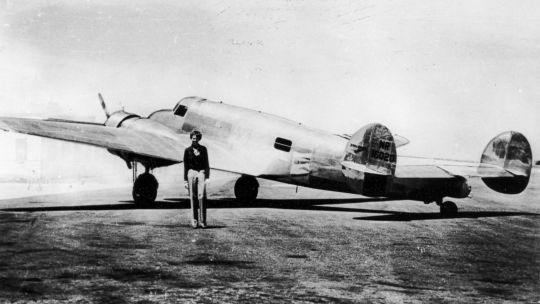
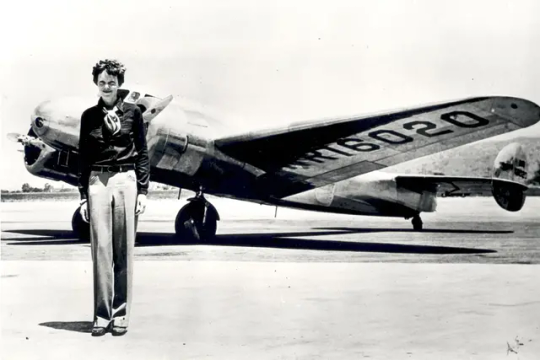
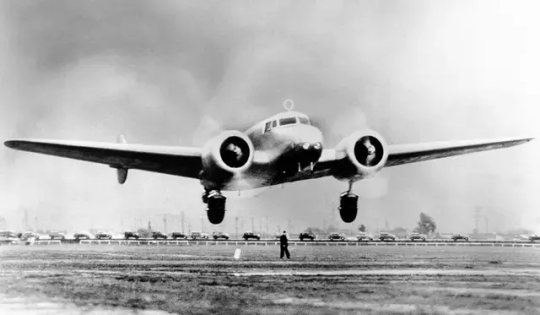
By late June, they had made it to Lae, Papua New Guinea. After a few days’ rest, they departed for Howland Island, a small, uninhabited outcrop in the Pacific where a refueling station had been built for their journey. The U.S. Coast Guard had a vessel, the Itasca, stationed nearby to help with the landing.
Operators aboard the Itasca heard Earhart’s radio messages as she got closer and closer to the island. But eventually, they lost contact. Earhart and Noonan were never seen or heard from again.
The U.S. Navy and Coast Guard spent 16 days searching for the missing duo without success. About one and a half years later, on January 5, 1939, Earhart was declared dead.
Theories abound about her mysterious disappearance—some onlookers have speculated that she was a spy or that she was captured by a foreign military. But Cochrane believes the simplest explanation is the most plausible: that Earhart and Noonan ran out of fuel near Howland Island.
“She’s got to be around there somewhere,” she adds.
By Sarah Kuta.
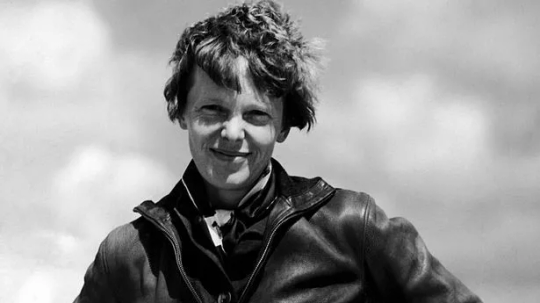
#Amelia Earhart#Have Researchers Found Amelia Earhart’s Long-Lost Plane?#Fred Noonan#Howland Island#Lockheed 10-E Electra plane#mystery#history#history news#long post#long reads
47 notes
·
View notes
Note
My 7-year old past self is happy and sad that possibly the search for Amelia Earhart has come to an end.
Deep Sea Vision found what it looks to be Amelia Earhart's Lockheed 10-E Electra airplane resting at the bottom of the Pacific Ocean. It's a sonar image, but it's enough you can see the tail of the plane and it really does look like the Lockheed 10-E Electra. If this is Amelia Earhart airplane, I am surprise how intact it is and it appears that maybe the nose cone broke off from it likely from impact. But still, for it to be that intact is strange and that can kinda tell you a story on how it landed. But what is fascinating, the search team launched from Tarawa, Kiribati near Nikumaroro Island, Kiribati. Nikumaroro is very significant because this is the island where in 1940, 3 years after Amelia's disappearance, they found bones belonging to a female, that matched her structure and height, a shoe, supplies that Amelia would of had on her airplane and including the same moisturizer she used.
Sadly, there are three theories that are likely true now....
Amelia Earhart drowned to death (assuming because the airplane was floating it seems to be mostly intact.) And some of her belongings floated up, eventually making it's way to the island. And the bones was so random woman. BUT keep in mind that there are no other known crashes in the area.
Amelia Earhart survived the crash and made it to the island. But got eaten by coconut crabs. The woman's bones was not complete and was near a old crab nest. That is - excuse my french - fucking horrifying.
Amelia Earhart survived the crash and survived on the island for a short time, possibly suffered from injuries she may had sustained in the crash.
Get ready for a new Amelia Earhart movie coming soon.
H-how big are coconut crabs to eat a whole ass person????
15 notes
·
View notes
Text
MH370: The Anniversary of Mystery
I wrote about a missing plane once before, a Lockheed Model 10-E Electra which had only two passengers and one was famed aviator Amelia Earhart. In 2024 here, Deep Sea Vision found via sonar what could possibly be the remains that missing Earhart plane from 1937. We don’t know. However, a missing plane tragedy far greater than Earhart’s missing plane exists and it’s the 10-year anniversary of…

View On WordPress
1 note
·
View note
Text
WORD IS THIS COULD BE AMELIA EARHART'S PLANE!?
Maybe the mystery will be solved?
Tony Romeo, a pilot himself and a former U.S. Air Force intelligence officer, is the latest in a string of adventurers to plumb the Pacific Ocean in search of the plane Earhart was flying in 1937 when, at the peak of her fame, she vanished.
In December, Romeo—who sold his commercial properties to fund his search—returned from an expedition with a sonar image of an aircraft-shaped object resting on the ocean floor. He believes it’s Earhart’s Lockheed 10-E Electra, and experts are intrigued.
The location where Romeo said he captured the image is about right, said Dorothy Cochrane, a curator in the aeronautics department of the Smithsonian Institution’s National Air and Space Museum, and sonar experts who have viewed the image agree that it’s unusual enough to take a closer look.
1 note
·
View note
Text
Was Amelia Earhart Eaten by Crabs? The Enduring Mystery
In August 2019, Robert Ballard, the deep-sea explorer renowned for uncovering the Titanic and John F. Kennedy’s WWII patrol boat, embarked on a mission to find the aircraft central to history’s most enduring mystery: Amelia Earhart’s downed Lockheed Model 10-E Electra.
Related: Did the Japanese Military Capture Amelia Earhart After Her Plane Crash?
The Mysterious Disappearance
On July 2, 1937,…

View On WordPress
#Amelia Earhart#Amelia Earhart Eaten by Crabs?#Amelia Earhart&039;s Unsolved Mystery#Japanese Military Capture Amelia Earhart
1 note
·
View note
Text
A piece of metal debris found in the western Pacific is deemed to be from a World War II plane, not Amelia Earhart’s Lockheed Electra.The mystery of what happened to Amelia Earhart has made little progress in recent years. A group searching for the plane’s whereabouts believe a photo may offer the next clue worth pursuing. We may never know what happened to Amelia Earhart, but it seems we’ll always have another clue to investigate. And another theory to debate.Just as scientists ruled out one long-thought promising piece of metal debris as belonging to the famed pilot’s plane, a group spearheading a search for her downed Lockheed Electra aircraft in the western Pacific surfaced another clue to start investigating.The search for Amelia Earhart never ends.The mystery started in July 1937. Earhart and her navigator, Fred Noonan, were already six weeks and 20,000 miles deep into a trip around the world, but about 1,700 miles southwest of Honolulu, Hawaii, the pair’s planned stop at Howland Island in the Pacific never happened.The Lockheed Model 10-E Electra missed the mark of the 2.5-square-mile island in the vast ocean. Not only are we not certain why the plane never made it to the island, but we also don’t know where it went instead.Amelia Earhart and Fred Noonan.Bettmann - Getty ImagesWith little proof ever unearthed to answer either question, that has left a limitless array of theories. As is often the case with these legendary mysteries, the most basic explanation—the Electra crashed into the ocean and sunk after Earhart and Noonan ran out of fuel—isn’t the most alluring.So, we have plenty of other theories, including the one that says Earhart and Noonan landed on the coral reef barrier surrounding Gardner Island, now known as Nikumaroro Island, about 350 nautical miles southeast of Howland. Distress radio calls from that island shortly following the crash bolster the theory. In fact, some believe giant crabs eventually ate Earhart after she died on the island.Then, when a piece of metal debris washed up on the island in 1991, it gave rise to the hope that it was a piece of Electra itself. It took roughly 30 years for technology to find a series of hidden letters and numbers etched on the aluminum panel not visible to the naked eye, according to the Daily Mail. While experts hoped to match the markings—letters and numbers “D24,” “XRO” and either “335” or “385”—to the Electra, recent analysis says that the plane piece actually ties to a downed Douglas C-47 World War II aircraft.Now The International Group for Historic Aircraft Recovery (TIGHAR), a key organization in the harboring of Earhart ideas, has something else to latch onto: a 2009 photo.Ric Gillespie, the executive director of TIGHAR, tells the Daily Mail that an underwater photo taken 14 years ago may show the plane’s engine cowling. “The similarity to an engine cowling and prop shaft was not noticed until years later,” he tells the newspaper, “and the exact location was not noted at the time, which meant attempts to relocate the object were unsuccessful.”The long-held belief in the plane panel wasn’t the only exciting piece of Earhart evidence to ultimately render a less-than-stellar result for those hoping to prove Earhart landed safely on Gardner. Bone fragments found on the island were tested over a decade ago and ultimately didn’t support the theory.Bettmann - Getty ImagesTIGHAR still maintains that the Gardner Island theory is the most accurate. The group cites several nights of distress calls and says Navy searchers saw signs of recent habitation on the island, but didn’t investigate because they believed people lived on the island, when in fact, nobody had since 1892. The group says the rising tides and surf swept the Electra over the reef edge, and it now lies in deep water off the island’s west end.A murky 2009 photo offers the latest reason for Earhart searchers to hang on to the Gardner Island theory.You Might Also Like
0 notes
Text
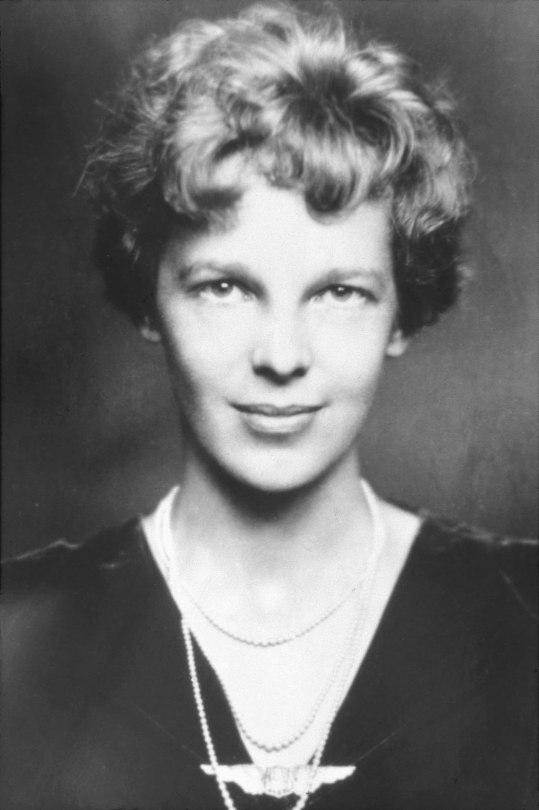




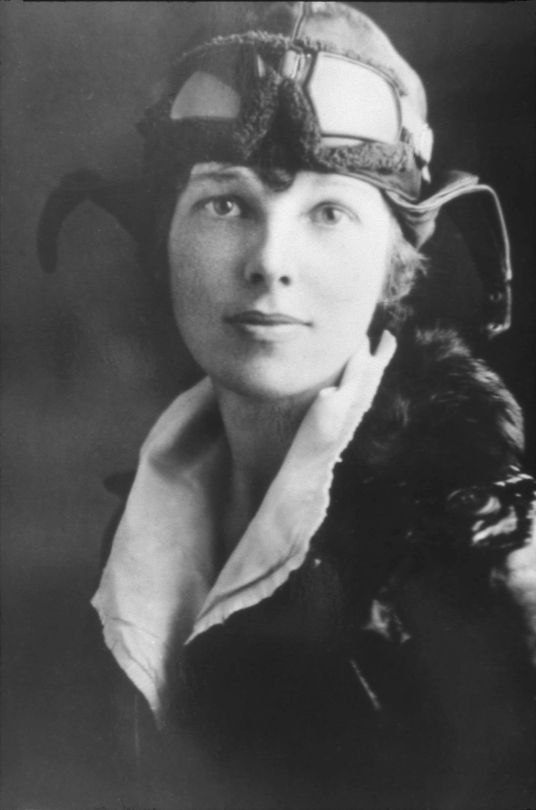




Amelia Earhart (1897-1937).
American aviation pioneer and author.
.
Earhart was the first female aviator to fly solo across the Atlantic Ocean. She set many other records, wrote best-selling books about her flying experiences, and was instrumental in the formation of The Ninety-Nines, an organization for female pilots. Her disappearance during a flight around the world in 1937 became an enduring mystery, fueling much speculation.
.
During a visit to her sister in Canada, Amelia developed an interest in caring for soldiers wounded in World War I. In 1918 she left junior college to become a nurse’s aide in Toronto.
.
She went on her first airplane ride in New York City in 1920, an experience that prompted her to take flying lessons. In 1921 she bought her first plane, a Kinner Airster, and two years later she earned her pilot’s license. In the mid-1920s Earhart moved to Massachusetts, where she became a social worker at the Denison House, a settlement home for immigrants in Boston. She also continued to pursue her interest in aviation.
.
In 1928, Earhart became the first female passenger to cross the Atlantic by airplane (accompanying pilot Wilmer Stultz), for which she achieved celebrity status. In 1932, piloting a Lockheed Vega 5B, Earhart made a nonstop solo transatlantic flight, becoming the first woman to achieve such a feat. She received the United States Distinguished Flying Cross for this accomplishment.
.
In addition to her piloting feats, Earhart was known for encouraging women to reject constrictive social norms and to pursue various opportunities, especially in the field of aviation.
In 1935, Earhart became a visiting faculty member at Purdue University as an advisor to aeronautical engineering and a career counselor to women students. She was also a member of the National Woman's Party and an early supporter of the Equal Rights Amendment.
.
During an attempt to make a circumnavigational flight of the globe in 1937 in a Purdue-funded Lockheed Model 10-E Electra, Earhart and navigator Fred Noonan disappeared over the central Pacific Ocean near Howland Island.
.
She was married to George P. Putnam.
[Submission]
#amelia earhart#aviator#aviation#early 20th century#ww1#world war 1#1920s#1930s#american history#us history#usa#women history#women in history#history#history lesson#historical#historic#história#histoire#history buff#history crush#history hottie#history lover#history nerd#history geek#historical babes#historical hottie#historical figure#badass woman#heroine
256 notes
·
View notes
Text

"During an attempt to make a circumnavigational flight of the globe in 1937 in a Purdue-funded Lockheed Model 10-E Electra, Earhart and navigator Fred Noonan disappearedover the central Pacific Ocean near Howland Island. Fascination with her life, career, and disappearance continues to this day."
- Wikipedia page
"On July 2, 1937, aviator Amelia Earhartand navigator Fred Noonan disappeared over the Pacific Ocean while attempting to make the first round-the-world flight along the equator."
- A YouTube Channel
"Amelia Earhart. Amelia Earhart, in full Amelia Mary Earhart, (born July 24, 1897, Atchison, Kansas, U.S.—disappeared July 2, 1937, near Howland Island, central Pacific Ocean), American aviator, one of the world's most celebrated, who was the first woman to fly solo across the Atlantic Ocean."
- Brittanica
"Amelia Earhart's Last Flight
She decided that her next trip would be to fly around the world. In March 1937, she flew to Hawaii with fellow pilot Paul Mantz to begin this flight. Earhart lost control of the plane on takeoff, however, and the plane had to be sent to the factory for repairs.
In June, she went to Miami to again begin a flight around the world, this time with Fred Noonan as her navigator. No one knows why, but she left behind important communication and navigation instruments. Perhaps it was to make room for additional fuel for the long flight. The pair made it to New Guinea in 21 days, even though Earhart was tired and ill. During the next leg of the trip, they departed New Guinea for Howland Island, a tiny island in the middle of the Pacific Ocean. July 2, 1937, was the last time Earhart and Noonan communicated with a nearby Coast Guard ship. They were never heard from again. What do you think happened? "
- americaslibrary.gov
0 notes
Text
Finding Amelia Earhart’s Plane Seemed Impossible. Then Came a Startling Clue.
Robert Ballard is the finder of important lost things.
In 1985, he discovered the Titanic scattered beneath the Atlantic Ocean. He and his team also located the giant Nazi battleship Bismarck and, more recently, 18 shipwrecks in the Black Sea.
Dr. Ballard has always wanted to find the remains of the plane Amelia Earhart was flying when she disappeared in 1937. But he feared the hunt would be yet another in a long line of futile searches.
“You have it in a holding pattern in your head,” said Dr. Ballard, founder of the Ocean Exploration Trust. “You’re still saying, ‘No, no, it’s too big a search area.’”
Then, a few years ago, another group of explorers found clues so compelling that Dr. Ballard changed his mind. Now, not only is he certain he knows where the plane is, he has set course for a remote atoll in the Pacific island nation of Kiribati to recover it.
If his expedition succeeds, he’ll not only solve one of the enduring mysteries of the 20th century. The 77-year-old explorer will also be transferring his legacy of discovery to a new generation of oceanic detectives.
[Like the Science Times page on Facebook. | Sign up for the Science Times newsletter.]
Until recently, Dr. Ballard accepted the Navy’s version of Earhart’s fate: On July 2, 1937, near the end of their round-the-world flight, the aviator and her navigator, Fred Noonan, vanished over the Pacific. After a lengthy and costly search, the Navy concluded on July 18, 1937, that the two died shortly after crashing into the ocean.
But in 2012, an old friend presented Dr. Ballard with a startling alternative.
Kurt M. Campbell, who served as assistant secretary of state for East Asian and Pacific affairs in the Obama administration, invited Dr. Ballard to a meeting. The two had known each other since their days in Naval intelligence.
Mr. Campbell ushered him into his office, Dr. Ballard recalled in a recent interview: “He closed the door, and he said, ‘I want to show you a picture.’”
First, he offered Dr. Ballard a grainy black-and-white photo. “He said, ‘What do you see?’ I said, ‘I see an island with a ship on a reef?’ And he said, ‘No, look over to the left.’”
As Dr. Ballard squinted at the blur, Mr. Campbell handed him a second, digitally enhanced image. Mr. Campbell said the smudge was landing gear from a Lockheed Model 10-E Electra. And the reef in the picture was part of tiny Nikumaroro Island, in the mostly uninhabited Phoenix Islands.
There it was, a precise place to look for Earhart’s plane.
“I went, ‘I’ll be damned,’” he said. “‘That really narrows the search, doesn’t it?’”
The old photograph was taken by Eric Bevington, a British colonial officer, in October 1937, three months after Earhart disappeared. Mr. Bevington and his team had scouted Gardner Island, now called Nikumaroro. A British freighter had run aground years before on the northwest corner of the island, and the young officer snapped a picture of it.
Mr. Bevington didn’t know he had also captured something sticking out of the water. The Bevington Object, as it became known, was less than one millimeter long — a tiny speck near the edge of the frame.
Decades later, an organization called The International Group for Historic Aircraft Recovery, or Tighar, received Mr. Bevington’s pictures. The group is a nonprofit organization dedicated to aviation archaeology and aircraft preservation. It has been heavily involved in searching for Earhart at Nikumaroro.
Fascination with Earhart’s disappearance has led to wild theories: that she was an American spy captured by the Japanese, or that she lived out her days after assuming a false identity as a New Jersey housewife.
Those who believe in the crash at Nikumaroro say it was along Earhart’s stated navigational line.
The Navy even followed clues based on distress calls and dispatched the Colorado, a battleship, from Pearl Harbor in Hawaii, to search the Phoenix Islands. But Dr. Ballard and Tighar researchers believe tides would have dragged the plane into deeper waters by the time it arrived at Nikumaroro.
According to the official report, a search pilot saw “signs of recent habitation” there. But because nobody waved them down, the search team left and the Navy dismissed the theory. What the sailors didn’t know was that the island had been uninhabited for 40 years.
Others say it’s unlikely the island was where Earhart’s life ended.
Dorothy Cochrane, curator for general aviation at the National Air and Space Museum, believes that Earhart crashed in the ocean near Howland Island, Earhart’s original destination, hundreds of miles to the northwest.
But in 2010, the notion that the real site may be Nikumaroro got a boost when Jeff Glickman, a forensic imaging expert for Tighar, spotted the blur in the Bevington photo and concluded its shape was consistent with Lockheed Electra landing gear.
Armed with this clue, Richard E. Gillespie, the director of Tighar, reached out to Mr. Campbell, an avid Earhart fan, for a second opinion.
Mr. Campbell shared the photo with experts at the National Geospatial-Intelligence Agency, who used classified technology to enhance the picture. It was sent to intelligence analysts at the Pentagon, who independently concluded the object looked like the landing gear of a Lockheed Model 10-E Electra, Mr. Campbell said.
So Mr. Campbell called Dr. Ballard to see if he thought it was a good idea to support Mr. Gillespie’s 2012 mission to Nikumaroro, one of a dozen Tighar has made to the island, but the first to search underwater.
That expedition was unsuccessful. But the group didn’t have the funding or capabilities of Dr. Ballard and his team. And with his ship, the Nautilus, now in the Pacific Ocean, and its other research obligations completed, Dr. Ballard is ready to focus on the search for Earhart.
“The more I read, the more I was convinced I could do it,” he said.
Beyond his 60 years of experience, Dr. Ballard’s ship is equipped with a suite of high-definition cameras, a 3-D mapping system and remotely operated underwater vehicles, or ROV’s, one of which can descend nearly 20,000 feet.
But that doesn’t mean the expedition will be easy.
Viewed from above, Nikumaroro is small and flat. But the island is only the plateau of a steep underwater mountain rising 10,000 feet from the ocean floor. Earhart landed on the very edge of the island, Dr. Ballard believes. As tides rose, her plane may have slipped down the underwater slope.
The ridges of the mountain are rugged — full of troughs and valleys that can hinder sonar. After using onboard technology to create a 3-D map of its sides, the team will have to search the mountain visually, monitoring video feeds from the ROV’s in 12-hour shifts.
“Imagine searching the side of a volcano at night with a flashlight,” Dr. Ballard said.
Mr. Gillespie fears what’s left of the Electra might be no more than scattered debris. Still, Dr. Ballard’s technology gives him hope. Even those who doubt the Nikumaroro hypothesis think Dr. Ballard’s high-tech search at least may prove Earhart was never there.
“It’s time to set that theory straight, and hopefully this will do that,” said Dr. Cochrane.
The expedition is being funded by the National Geographic Society, which will record the progress of the Nautilus and its crew for an Oct. 20 television program.
The crew’s efforts will be complemented by a team on the island led by Fredrik Hiebert, the National Geographic Society’s archaeologist-in-residence.
For this expedition, Dr. Ballard will share leadership on the Nautilus with Allison Fundis, a rising explorer he hopes will eventually take his place.
“I feel like Leakey handing it off to Jane Goodall,” he said, referencing her mentor, the paleoanthropologist Louis Leakey.
Dr. Ballard feels strongly about promoting women, especially as the Nautilus searches the ocean for one of history’s great female pioneers. Women make up just over half of the crew of the ship.
Ms. Fundis said she is thrilled to be sharing leadership of the Earhart expedition.
“She just had a remarkable life and was a remarkable person, with a sense of bravery that broke down barriers and expectations at a time when society kind of felt like a woman really shouldn’t or couldn’t accomplish what she did,” Ms. Fundis said.
The two explorers are confident they will find the Electra.
“Science explorers are like an ideal gas,” Mr. Ballard joked. “They can expand to fill any volume, but they can only do work under pressure.”
Then he laughed, “And the pressure’s on.”
Sahred From Source link Science
from WordPress http://bit.ly/33vZ10i
via IFTTT
0 notes
Text
Hyperallergic: Did Amelia Earhart Survive the Crash? Some Say So, Based on a Blurry Photo
Photo from the Marshall Islands that may depict Amelia Earhart (photo courtesy U.S. National Archives, Records of the Office of Naval Intelligence, Pacific Ocean Area Monograph Files)
Whatever happened to Amelia Earhart 80 years ago, when she disappeared over the Pacific Ocean while attempting to circumnavigate the world? A newfound photo recently spotlighted by the History Channel has people abuzz about the famous pilot’s mysterious fate. Long believed by many to have perished after her plane ran out of fuel and plunged into the waters, Earhart may actually have survived, investigators now claim — before being taken captive by the Japanese and held prisoner until her death on the island of Saipan.
Detail of photo from the Marshall Islands that may depict Amelia Earhart (photo courtesy U.S. National Archives, Records of the Office of Naval Intelligence, Pacific Ocean Area Monograph Files)
Their clue to her survival is a small, literally fuzzy one: an old, black-and-white image of a woman sitting on a dock. Surrounded by a vast view of water and boats and a group of people, she’s easy to overlook — we can’t even see her face, as her back is towards us. But as History.com explains, retired federal agent Les Kinney, who had found the photograph while digging through the National Archives, saw enough reason to believe that the figure is Earhart, and believes to have identified one of her companions, her navigator Fred Noonan. The 44-year-old aviator may possibly be the man standing on the far left edge of the dock, his face turned directly towards us.
The photograph’s caption notes the location as “Marshall Islands, Jaluit Atoll, Jaluit Island, Jaluit Harbor”; Kinney dates the photo to before 1943, since the US conducted over 30 bombing runs on the island. He also believes that a plane, towed by a barge in the background, is her Lockheed 10-E Electra aircraft, as it appears to be the same length as that lost jet. The vessel, according to this theory, would have been the Japanese military vessel known as the Koshu Maru that may have captured the unfortunate American pair.
The image is circulating in advance of a new History Channel program, Amelia Earhart: The Lost Evidence, which premieres this Sunday. Other investigators involved in decoding the photograph include facial recognition expert Ken Gibson, who told NBC News that he believed the man on the dock was Noonan because the “hairline is the most distinctive characteristic … It’s a very sharp receding hairline. The nose is very prominent.” That claim seems like a stretch, seeing that the man’s face is half-hidden in shadows, but the individual is definitely a middle-aged man (Noonan was 44 when he died) who looks like he’s spent lots of time out in the sun. As for the alleged Earhart, she has short hair and wears pants — two traits that link her to the aviation pioneer, who favored trousers. But that’s really about it.
While the discovery certainly makes for a tantalizing History channel segment (promoted, of course, with the above dramatic trailer), other experts find its evidence a little dubious. Smithsonian Magazine got in touch with a curator at the National Air and Space Museum, who described the image as “kind of a blurry photograph.
“I can’t really comment definitively on the photograph, and I don’t think [History investigators] can either,” Dorothy Cochrane told Smithsonian. “We really have to be sure of what we’re saying is evidence, and saying what is real. We have to go with what we see the facts are, and that’s what the Coast Guard reported.” According to those reports, Earhart was close to her destination of Howland Island, but veered off course and flew until they exhausted their fuel supply. The Coast Guard cutter known as Itasca was helping guide the flight, but Earhart and Noonan had lost contact with it.
The theory that the Japanese captured Earhart isn’t new: as NBC News reported, some locals on the Marshall Islands have insisted they saw Earhart crash before being taken prisoner. The island republic even issued a set of four commemorative stamps in 1987 to further circulate this narrative. They depict her takeoff in New Guinea, her crash landing at Mili Atoll, and her plane’s recovery by the Koshu Maru. Of course, this is also but one theory of many: a book published last year by W.C. Jameson argues that she was a spy for the US government, which led to her being shot down by the Japanese. Meanwhile, the aviation foundation International Group for Historic Aircraft Recovery believes that she crashed on the island of Nikumaroro, where she died as a castaway. One author has even claimed that Earhart ended up in New Jersey to live out her days as a housewife. His publisher, as USA Today reported, ended up pulling his books off shelves following a lawsuit filed by the real New Jersey woman who denied any connection to the pilot.
The post Did Amelia Earhart Survive the Crash? Some Say So, Based on a Blurry Photo appeared first on Hyperallergic.
from Hyperallergic http://ift.tt/2sSdCQj
via IFTTT
0 notes
Text






Amelia Earhart's Plane
Lockheed's Model 10 E Electra
Performance and Specifications
Engines: The 400 horsepower Pratt & Whitney R-985 engine was installed on the Model 10A aircraft, and the 10E had the more powerful 600 horsepower Pratt & Whitney R-1340 Wasp SH31 engines.
Cruise speed: 190-194 mph
Max Speed: 202 mph
Range: 619 nautical miles
Service Ceiling: 19,400 feet
Empty Weight: 6,454 pounds
Length: 38 feet, 7 inches
Height: 10 feet, 1 inch
0 notes